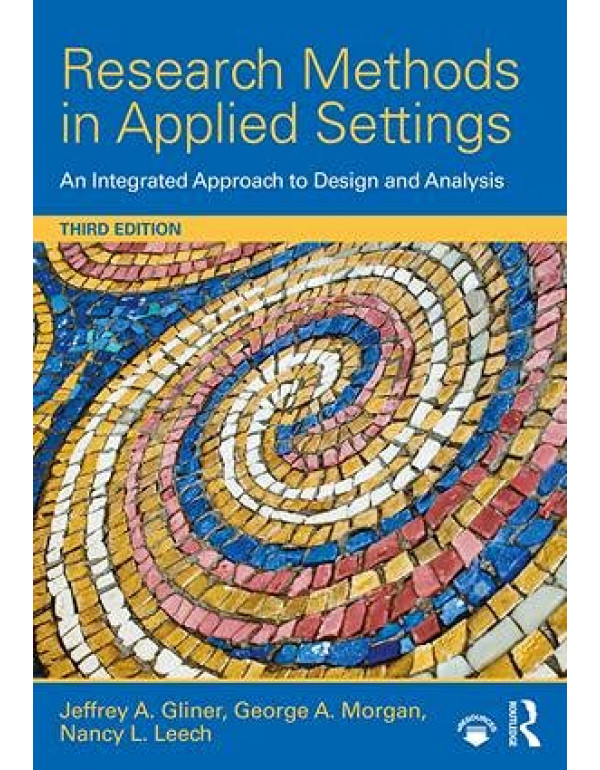- Type: Hardcover Book.
- Publisher:
- Language : English
- Item Weight: 1.025
- Dimensions: 18.4 x 26 x 3.8
- Pages: 598
- Edition: 3
Title: Research Methods in Applied Settings: An Integrated Approach to Design and Analysis, Third Edition
Authors: Jeffrey A. Gliner, George A. Morgan, and Nancy L. Leech
Target Audience: This comprehensive guide caters to students in applied programs, researchers, and practitioners seeking to understand and conduct quantitative research studies. It's particularly beneficial for those aiming to:
- Plan and Execute Research Projects: Learn the process of research, from formulating a question to analyzing and interpreting data.
- Navigate Data Analysis and Interpretation: Develop skills in selecting appropriate statistical techniques and accurately interpret results.
- Critically Evaluate Research: Gain the ability to assess the strengths and weaknesses of existing research studies.
Key Features:
- Integrated Approach: Emphasizes the interconnectedness of research design, data analysis, and interpretation throughout the book.
- Five Research Approaches: Focuses on five main approaches: randomized experiments, quasi-experiments, comparative studies, associational studies, and descriptive studies.
- Clarity and Practicality: Presents complex concepts in a clear and concise manner, with a focus on real-world application through numerous examples and case studies.
- Statistical Guidance: While not solely a statistics book, it equips readers with knowledge on selecting and interpreting appropriate statistical techniques for each research approach.
- Learning Support: Provides key terms, key distinctions, summaries, applied problems, interpretation questions, suggested readings, and online resources for further exploration.
Content:
The book follows the various stages of conducting research:
- Introduction: Establishes fundamental research concepts, different research approaches, and ethical considerations.
- Research Design: Explores the various research designs associated with the five main approaches mentioned above.
- Data Collection: Discusses various methods of data collection, including surveys, interviews, and observations.
- Data Analysis: Explains different statistical techniques used for analyzing quantitative data.
- Interpretation and Communication of Results: Guides readers on interpreting data, drawing conclusions, and effectively communicating their findings.
Overall:
"Research Methods in Applied Settings" serves as a valuable resource for anyone involved in applied research. It offers a comprehensive and practical guide to designing, conducting, analyzing, and interpreting quantitative research studies in a clear and understandable manner. With its emphasis on real-world application and focus on five key research approaches, this book is well-suited for students, researchers, and practitioners across various disciplines.
 4.7 (64) Reviews
4.7 (64) Reviews

